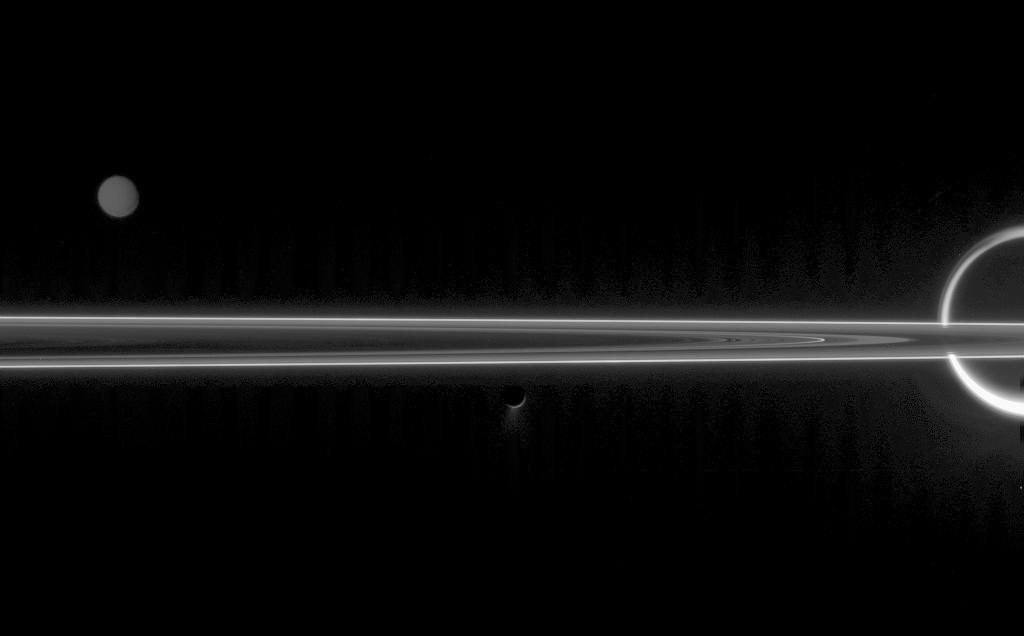The Moons Are the Stars

| PIA Number | PIA08216 |
|---|---|
| Language |
|
The real jewels of Saturn are arguably its stunning collection of icy moons. Seen here with the unlit side of the rings are Titan (5,150 kilometers, or 3,200 miles across at right), Tethys (1,071 kilometers, or 665 miles across at left) and Enceladus (505 kilometers, or 314 miles across at center) with its fountain-like geysers.
The faint, vertical banding in the image is due to "noise" in the spacecraft electronics. This noise is difficult to remove from an image that has a very wide dynamic range--i.e., a wide range of brightness levels--as in the difference between gleaming Titan and the faint plumes of Enceladus.
Additionally, a reflection of Titan's light within the camera optics is likely responsible for the faint secondary image of Titan's limb to the left of the giant moon.
The image was taken in visible green light with the Cassini spacecraft narrow-angle camera on June 10, 2006 at a distance of approximately 3.9 million kilometers (2.4 million miles) from Enceladus, 5.3 million kilometers (3.3 million miles) from Titan and 4.4 million kilometers (2.7 million miles) from Tethys. The Sun-Enceladus-spacecraft, or phase, angle is 160 degrees on Enceladus. Image scale is 23 kilometers (14 miles) per pixel on Enceladus, 32 kilometers (20 miles) per pixel on Titan and 26 kilometers (16 miles) per pixel on Tethys.
The Cassini-Huygens mission is a cooperative project of NASA, the European Space Agency and the Italian Space Agency. The Jet Propulsion Laboratory, a division of the California Institute of Technology in Pasadena, manages the mission for NASA's Science Mission Directorate, Washington, D.C. The Cassini orbiter and its two onboard cameras were designed, developed and assembled at JPL. The imaging operations center is based at the Space Science Institute in Boulder, Colo.
For more information about the Cassini-Huygens mission visit http://saturn.jpl.nasa.gov . The Cassini imaging team homepage is at http://ciclops.org .
Credit: NASA/JPL/Space Science Institute
